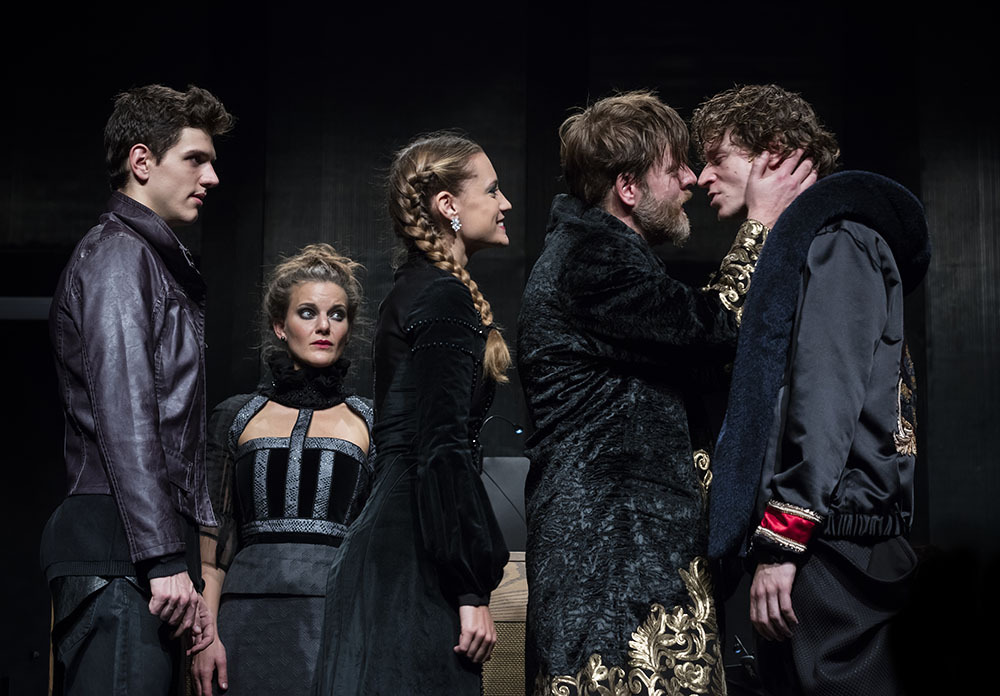


This angered the powerful earls, and led to frequent hostilities between the king and his subjects. The installation of Gaveston as Earl of Cornwall, and his unconventional closeness to the king, led to him being perceived by many chroniclers as a ‘second king’. The first thing Edward did when he became king was invite Gaveston back to England, and the very first charter passed in his reign was to grant Gaveston the Earldom of Cornwall. In a strategic move to shore up relations between France and England, Edward married Isabella, daughter of King Philip IV of France, and they were crowned together at Westminster Abbey in 1308, Edward aged 23 and Isabella aged 13. Edward refers to ‘my sweet Gaveston’ and when asked why he favours him, replies ‘Because he loves me more than all the world.’ In his play Edward II Christopher Marlowe appears to encourage the audience to interpret the relationship as a homosexual one. 'upon looking on him the son of the king immediately felt such love for him that he entered into a covenant of constancy, and bound himself with him before all other mortals with a bond of indissoluble love, firmly drawn up and fastened with a knot.'. It is impossible to know the exact nature of their relationship, but there is strong evidence to suggest it was a romantic one. He also accompanied Gaveston to Dover with two minstrels. Before he left, the young prince Edward lavished him with gifts including two fine outfits, five horses, swans and herons. After a falling out between prince Edward and and the king in 1307, Gaveston was banished to France.

Gaveston was the son of one of the king’s household knights, and the two teenagers struck up a close friendship. In 1300, when Edward was 15 years old, Piers Gaveston begins to appear in the prince’s household accounts. He was a strong patron of the arts, and in 1313, when Edward and Isabella were visiting the French court, they were entertained by 54 naked dancers. Edward also enjoyed music, in particular the organ and the Welsh stringed instrument known as a crwth. He kept a camel at his palace in Langley and also had a pet lion, which he took on campaign to Scotland. He had a strong interest in outdoor activities, in particular rowing, horse-breeding and greyhound breeding. He later granted the manor to his queen, Isabella.Ī contemporary described Edward as ‘tall and strong, a fine figure of a handsome man’. Edward frequently stayed at Eltham, and during his reign considerable improvements were made, including the construction of a new retaining wall. In 1305, the Bishop of Durham, Anthony Bek presented the manor of Eltham to the future king.

In 1301, at the age of 16, Edward of Caernarfon became the first English prince to hold the title of Prince of Wales. Edward I had been successful in subjugating Wales and joining it with England. Edward was born in Caernarfon Castle in Wales in 1284, to King Edward I and his queen Eleanor of Castile.


 0 kommentar(er)
0 kommentar(er)
